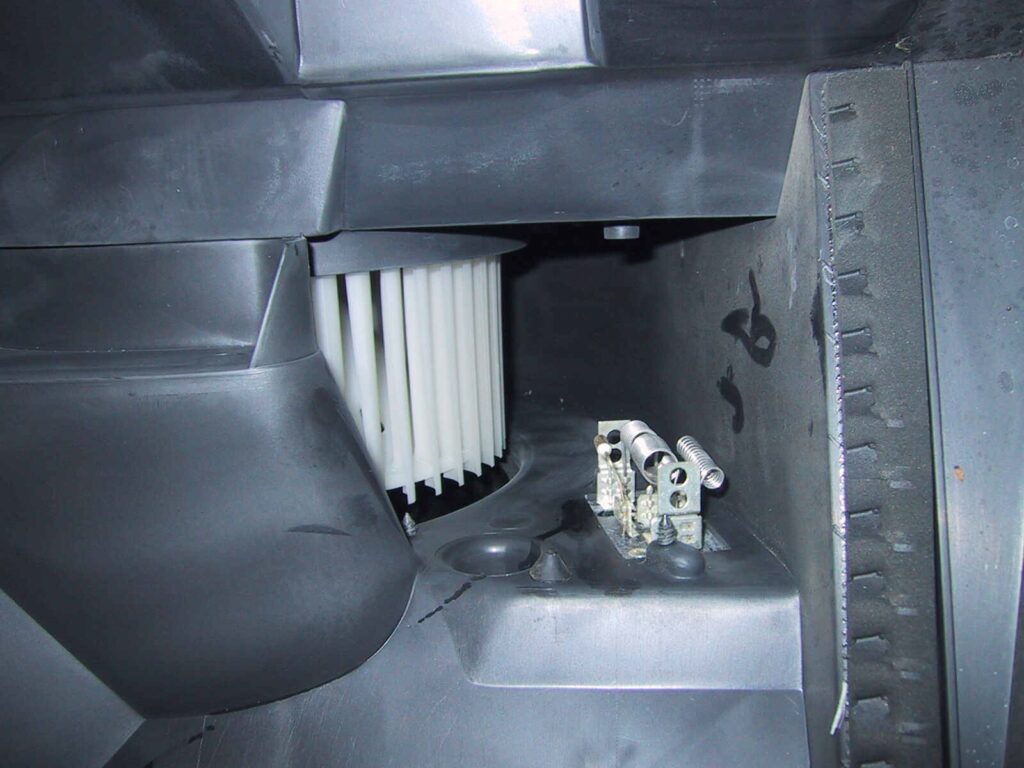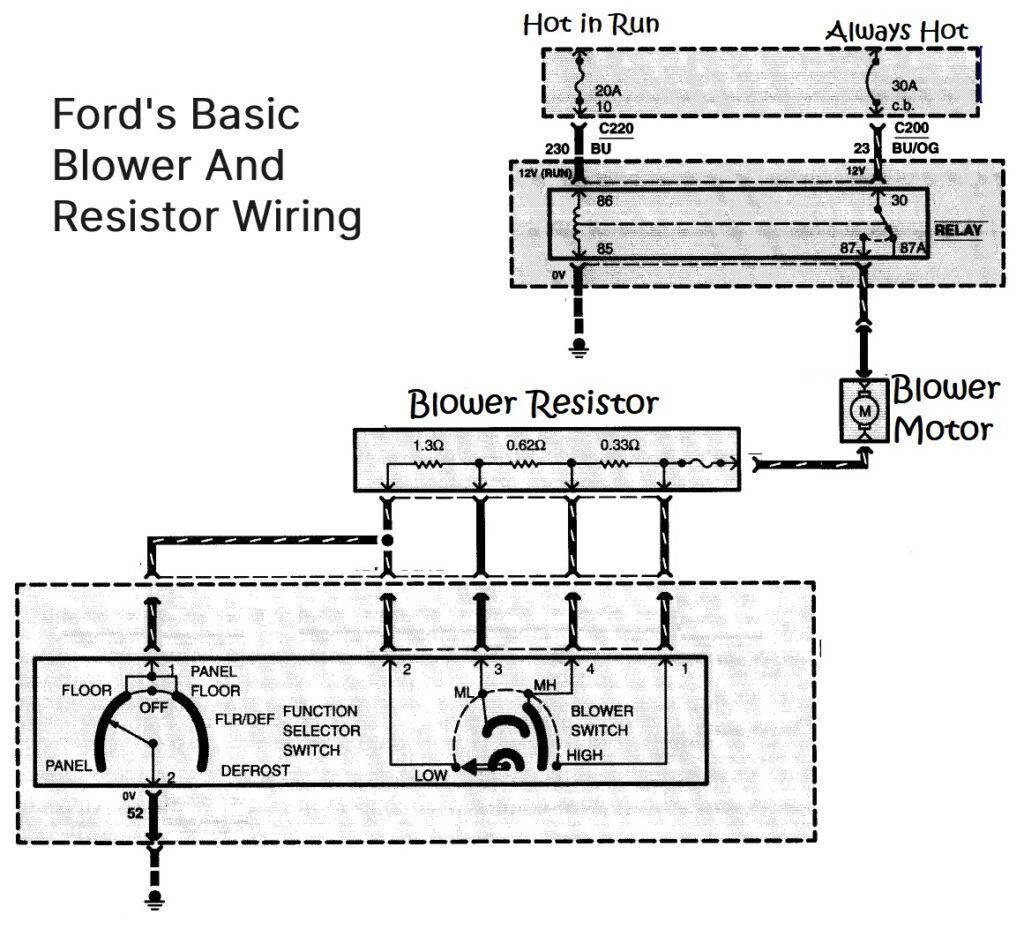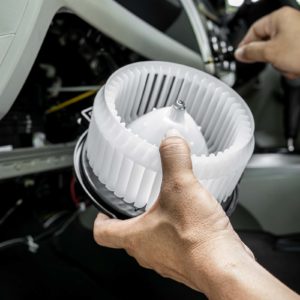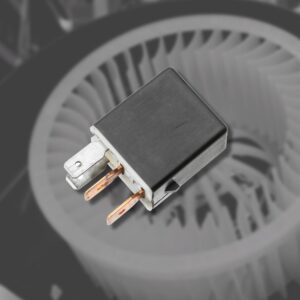Q: Where Is the Blower Motor Typically Located?
A: The blower motor can usually be found under the dashboard on the passenger side.
It’s typically a permanent magnet, one-speed motor that operates at full battery voltage on high speed but on lower voltages as dropped by the blower resistor on its lower speeds. On automatic temperature control (EATC) equipped vehicles, the blower motor is usually operated by a transistor so that many more speeds are available.
A fan switch controls the different speeds of the blower motor.
Resistors can be found near the blower motor, sitting in the duct where airflow passes, so they can be cooled down because resistance in a current intensive circuit creates quite a bit of heat in the resistor.


Tips on How to Access the Blower Motor
Make sure to disconnect the battery before removing anything else. Then, refer to your vehicle manual to find out the blower motor’s exact location.
Usually, it’s under the instrument panel on the right side below the glove box, but sometimes it’s under the hood over on the passenger side of the bulkhead by the fender. If you’re pulling it yourself, have some ¼ inch extensions with wiggle sockets on hand before you start. Some blowers are very easy to remove; others, not so much.
Removing the blower motor usually involves a few simple tools like a flathead screwdriver, some quarter-inch drive sockets that wiggle (and some that don’t), and a ratchet. If the blower motor is on the passenger side footwell area, you’may also need to push a few retaining clips or remove some hinge screws to remove the glove box, but that isn’t usually necessary.
The blower motor should slide out easily once the bolts are unscrewed. Depending on your vehicle’s specifications, you might also need to replace a gasket.

Any information provided on this Website is for informational purposes only and is not intended to replace consultation with a professional mechanic. The accuracy and timeliness of the information may change from the time of publication.





























